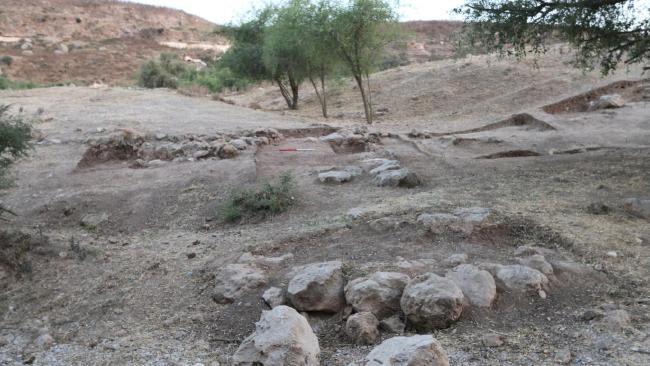
It turns out this battle might have actually taken place.
REMEMBER the biblical tale of David versus Goliath?
Archaeologists think they may have discovered in Israel the home of biblical giant Goliath.
The Ackerman Family Bar-Ilan University Expedition, led by Professor Aren Maeir, located the lost city of Gath during excavations of an area now divided between the warring states of Palestine and Israel.
In biblical accounts, the former Holy Land was one of five cities belonging to Israel’s ancient foes, the Philistines.
The Old Testament also describes Gath as the home of Goliath — the enormous warrior killed with a slingshot fired by David before he became king of Israel.
Melbourne University Associate Professor Louise Hitchcock said the archaeologists have known about the site for almost two decades.
“I have been digging there every July since 2008, but the project itself has been going on since 1997,” she told news.com.au.
The recent discovery of the entrance gate of the biblical city has been the biggest finding made by a researcher. The gates provide evidence of the status and influence held by the Philistines in the ninth and tenth centuries BC.
The finding is believed to match the description gates mentioned in the Bible’s Books of Samuel:
“David took these words to heart and was very much afraid of Achish king of Gath. So he pretended to be insane in their presence; and while he was in their hands he acted like a madman, making marks on the doors of the gate and letting saliva run down his beard.”

Remains of Iron Age fortifications in the lower city section of the Philistine city of Gath. Source: Professor Aren Maeir.Source:Supplied
While not personally involved in the uncovering of the gate, Ms Hitchcock said she has made a number of other discoveries that go along with the theory including an inscription of the name Goliath, two Philistine temples, alters and ritual objects.
“The discovery of the gate in the lower part of the city is different to the area where I have been digging,” she said. “I have been excavating the houses of the people who likely built the gate.”
Ms Hitchcock said it was in these houses she made the discovery of some pottery typically associated with Philistine culture.
“The domestic remains of distinctive Philistine-style pottery also show elements of Israelite technique,” she said.
“This suggests there was some multiculturalism between the warring factions.”
Even though the excavations correlate with the presence of Gath, Ms Hitchcock doesn’t believe they are unequivocal proof of the existence of God.
“I’m not religious and I see the Bible as a mixture of genres to help Israelites formulate their own identity,” she said.
As for Goliath himself, Ms Hitchcock said there was no way to determine if he actually was the monstrous giant described in the bible.
“We don’t really know how tall he was, but most people from that time were very short,” she said. “So he only would have had to been around 6ft tall for people to consider him a giant.”













